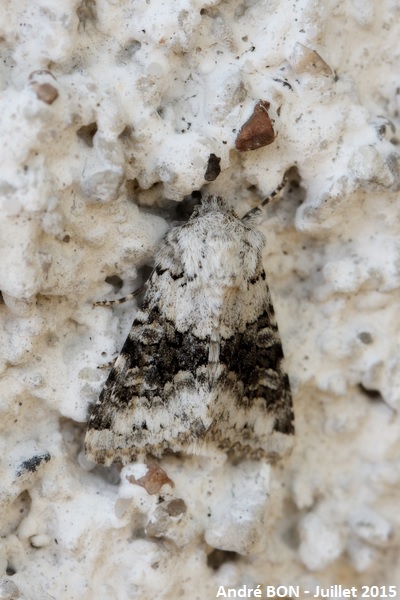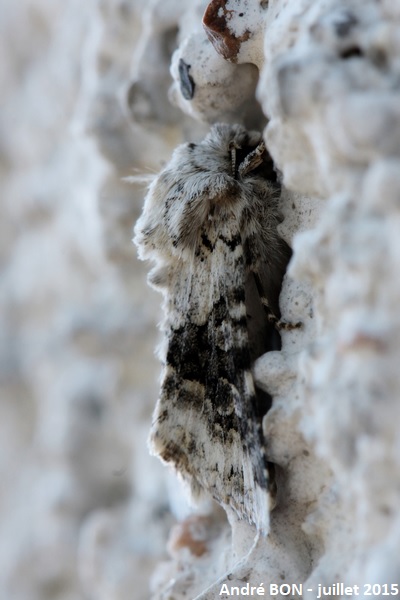

| Broad-barred White (Hecatera bicolorata (Hufnagel, 1766)) |


|
|
Scientific name: Hecatera bicolorata (Hufnagel, 1766) Common name: Broad-barred White French name: Noctuelle sereine Order: Lepidoptera Suborder: Heterocera Family: Noctuidae Subfamily: Noctuinae Wingspan: 28-35 mm. Biotope: Open areas, waste lands, road sides, meadows. Geographic area: Europe, Russia, Central Asia, China, Near-East, Middle-East. Flight time: April-May then July-August. Number of generations : 2 Caterpillar: The upper side is green or brown and bears some blackish marks which can sometimes resemble W letters. It is separated from the pale green lower side by a broad light-coloured lateral stripe. The head is pale brown. Host plant: Asteraceae. |
The Broad-barred White's fore wings are a white to off-white colour. They are crossed by a broad olive brown median band which widens towards the costal edge. This band is marked with the orbicular and reniform patches with a light colour surrounding a dark centre. There is a prominent tuft of hairs above and back of the head. The Brad-barred White is attracted to light. It over winters as a chrysalis under the ground. |
| [To know more about the Broad-barred White] [Next picture] [Top] |

|
Except in very rare occasions, like my trip to French Guyana as an example, I do not use light traps to attract and observe moths. I only take pictures of those that I find during their diurnal rest and years after years I have now a rather long list of species. |
| [To know more about the Broad-barred White] [Previous picture] [Top] |

|
Side view showing the tuft of hairs at the back of the head. |